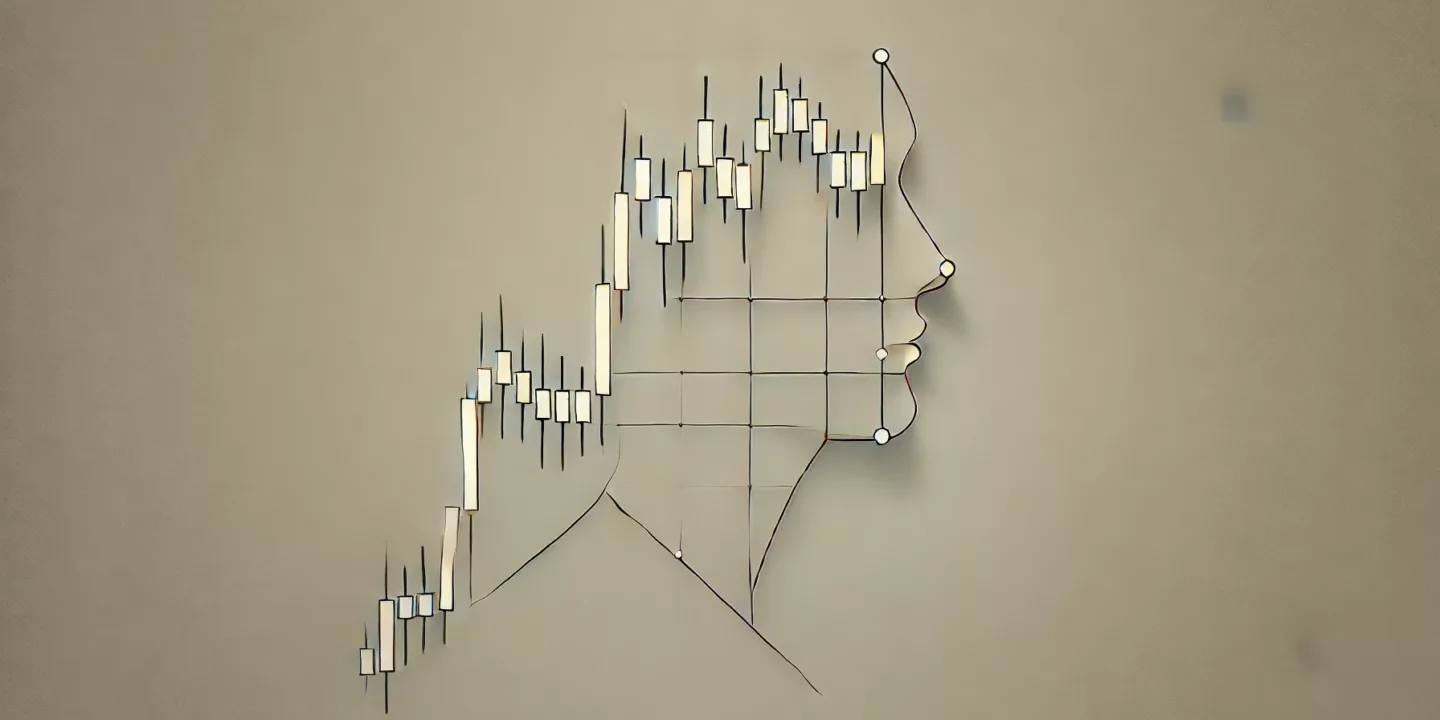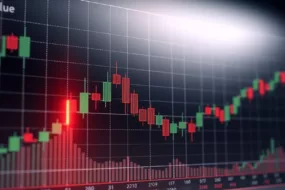
Identifying patterns and trends in crypto trading is crucial to making the most of investments and moving before it is too late. Among several patterns and strategies, one commonly studied pattern is the inverse head-and-shoulder pattern, which indicates a bullish reversal pattern.
Inverse Head and Shoulder Pattern in Crypto is widely watched by different traders as it hints at the potential of reversal from a downward trend. This article will explore the inverse head-and-shoulder pattern in detail, along with its components, identification process, significance, and strategies, helping you understand the potential of trading based on this pattern.
Key Takeaways
- What is the Inverse Head and Shoulder Pattern?
- Interpreting the Inverse Head and Shoulder Pattern in crypto trading
- Advantages and Disadvantages of Inverse Head and Shoulder Pattern
What is the Inverse Head and Shoulder Pattern?
The inverse head-and-shoulder pattern is formulated by three troughs or dips in the price action. The middle dip resembles a head, while the right and left dips on the less deep and low sides represent the two shoulders.
The name of this pattern is derived from the visual representation of the pattern.
If you reverse the pattern, the pattern will represent a head and two shoulders. Because of an inverse image, the ultimate name derived is an inverse head-and-shoulder pattern. Let us now look into each of its components separately.
Key Components of Inverse Head-and-Shoulder Pattern
- Left Shoulder: The left shoulder formation occurs at the beginning of a downtrend and represents the first attempt at a price reversal. It is the first trough on the left side of the pattern.
- Head: The head is portrayed by the lowest trough in the pattern in the middle of the two shoulders. It is a deeper dip than the shoulder, thus representing a deeper dip in prices, which is often an indication of increased pressure to sell.
- Right Shoulder: The trough next to the neck is the right shoulder. It is higher than the left shoulder but lower than the head and represents yet another attempt to reverse the downward trend of crypto pricing.
- Neckline: The neckline is a trendline drawn across the peaks of both shoulders, serving as a support level. It is the most important indicator because as soon as the price breaks above the neckline, it confirms the bullish reversal.
How to Identify an Inverse Head and Shoulder Pattern in Crypto?
Four main factors are involved in identifying the inverse head and shoulder trend. These include:
- Downtrend Confirmation: The most important factor is confirmation that asset prices are in an ongoing downtrend. This is crucial because the inverse head-and-shoulder pattern mostly forms only after a significant downtrend in the asset.
- Trough Formation: The next indication of identifying this trend is to observe the troughs. The price chart must have three troughs, and the middle should be lower than the troughs on either side, representing the shoulders.
- Neckline Formation: As soon as you notice three troughs in the price chart, draw a neckline connecting the high points of the left and the right shoulder. This line acts as the resistance level over which the price must break for a successful breakthrough.
- Volume Consideration: Another way to confirm the trend’s occurrence is to analyze the volume. The volume usually decreases when the pattern forms and increases when the price finally breaks above the neckline.
Interpretation of the Inverse Head and Shoulder Pattern
This trend is an important indicator of the market shift from a bearish trend to a bullish trend. Here is how to interpret the pattern:
- Reversal Signal: The pattern indicates an exhaustion of the selling pressure. This is evidenced by the formation of higher lows or the shoulders and a potential breakthrough above the neckline.
- Price Target: The height of the pattern between the head and the neckline determines not only the change to uptrend but also the price target after the breakout.
- Volume Confirmation: Increasing the volume on the breakout above the neckline adds credibility to the pattern and suggests stronger bullish momentum.
Significance of Volume in the Inverse Head and Shoulder Pattern
The volume generally declines during the left shoulder formation, reflecting decreasing selling pressure. During the formation of the head, the selling panic occurs, and the volume decreases at the low point of the head. However, it rises again as soon as buyer interest is renewed.
During the formation of the right shoulder, the volume is generally lower than that of the left shoulder, indicating a decline in selling pressure.
Finally, during the breakout of the neckline, the price breaks, and there is confirmation; this leads to a sudden increase in the volume. This indicates that the traders agree about the bullish movement of the crypto assets, and that volume suggests that the upward trend will stay and the buyers are committed to it.
Volume plays a central role in confirming the pattern, suggesting strong bullish momentum, and helping significantly with risk management. Low volume during the breakout is a red flag, showcasing that the pattern is not as reliable. As a result, it is often a second indicator that determines the price in technical analysis. It showcases the beliefs and intentions of the traders, and when carefully examined, volume can provide valuable insights.
Trading Strategies Based on the Inverse Head and Shoulders Pattern
There are different ways to approach and benefit from the inverse head and shoulders pattern, such as:
- Entry: Traders can buy and enter a long position when the price breaks above the neckline and the volume increases for added confirmation. It is best to look for chart patterns in long time frames to identify them accurately.
- Stop-loss: Another strategy is to place a stop-loss order below the neckline or the right shoulder to limit potential losses if the pattern fails. It is also crucial to determine the size of the trade based on the distance between the entry point, the stop loss, and the risk tolerance.
- Profit Target: The profit task is strategized based on the pattern’s height and uses other indicators to assess the potential resistance levels.
- Exit Strategies: The trader should exit when the price indicates reversing or reaching the target level. The trader can also use a trailing stop to protect their position while benefiting from additional profits.
Advantages and Disadvantages of Inverse Head and Shoulder Pattern
Following the inverse head and shoulder pattern has various advantages and disadvantages. It is crucial to consider the positives and negatives before proceeding with it.
Advantages of Inverse Head and Shoulder Pattern
- Reliable Pattern: The inverse head and shoulder pattern is widely recognized and is a trusted indicator of potential market peaks.
- Early Signals: One of the pattern’s most prominent advantages is its ability to provide early signals of potential market peaks. This helps traders make proactive decisions based on the trend before it changes.
- Compatibility with Different Indicators: The inverse head-and-shoulder pattern is compatible with indicators like trend lines or moving averages, helping traders gain a holistic market perspective.
- Easy Recognition: This trading pattern is easily recognizable by identifying the price chart’s dips. As a result, it is easy to recognize even for traders of all levels and skills.
- Entry and Exit Signals: This pattern provides clear and distinct entry and exit signals that allow traders to manage their risk levels and optimize their returns.
- Different Trading Horizons: A versatile trading tool that lets you make decisions in short-term or long-term trading scenarios.
Disadvantages of Inverse Head and Shoulder Pattern
- False Signals: Despite its popularity in crypto trading, the inverse head and shoulder patterns are prone to providing false signals that can lead traders to make misinformed decisions and lead to losses.
- Reliance on the Past: Another imitation of this trading pattern is that it depends on past price fluctuations to predict future pricing. As a result, it is lagging in nature and might not provide the best insights.
- Subjectivity Issues: Pattern interpretation can vary from person to person, leading to ambiguity and inconsistency in results.
- Market Vulnerability: Market manipulations can change the pattern’s results, causing distorted price signals and false patterns.
Tips or Trading with the Inverse Head and Shoulders Pattern
Here are a few tips to keep in mind while investing through this pattern:
- Confirm Before You Act: Always wait for confirmation signals, such as an increase in the volume on the breakout and the price holdings above the neckline, before acting based on the strategy.
- Consider the Market: It is crucial to study the overall ongoing market trends and sentiments to avoid trading in cryptocurrency against the prevailing market trends.
- Use Additional Indicators: Depending on one pattern is not the best choice for making prudent choices. For additional confirmation, combine the pattern with other technical indicators like moving averages, RSI (Relative Strength Index), or MACD (Moving Average Convergence Divergence).
- Manage Risks in Advance: Always use stop-loss orders to manage risk and avoid substantial losses if the pattern fails to execute despite the probability.
Combination of Inverse Head and Shoulders Pattern with Other Indicators
Here are some of the technical analysis indicators you can combine to enhance the reliability of the inverse head-and-shoulders pattern.
- Moving Average: They help identify the overall trend direction. A bullish reversal through this indicator is confirmed when there is a crossover of a short-term moving average over a long-term moving average.
- RSI: This indicator judges overbought and oversold conditions. An RSI value above 70 may confirm the changing trend towards a bullish pattern. This is especially true when it coincides with the neckline breakout.
- MACD: Like the moving average, MACD helps identify the overall trend direction and momentum. A bullish MACD crossover indicates a bullish pattern and provides additional confirmation.
- Volume Oscillator: This indicator confirms the trend’s strength based on volume. If the volume oscillator rises, you can confirm the pattern and add credibility to your analysis.
- Fibonacci Retracement: It helps identify resistance levels and potential support. If there is a 50% or 61.8% retracement level, it adds to the credibility of the trend analysis.
Conclusion
The inverse head and shoulders pattern is a powerful tool to help you make the right move based on the pre-determined analysis of the movement of a crypto asset. By understanding its components, identifying its formation, and using appropriate trading strategies, traders can enhance their ability to capitalize on bullish opportunities while managing risk effectively. However, like any technical analysis tool, it should be used with other indicators and considerations of market conditions.
The more you explore crypto trading and the number of times you use the trend, the better your position will be to assess the trend and act on it while maximizing security.
Looking to start your trading journey with confidence? Mudrex can be the right platform for you to explore crypto trading with the right resources at hand. Download the Mudrex app now!
FAQs
- What does the inverse head and shoulder pattern reveal?
The inverse head-and-shoulder pattern indicates the end of the bearish phase and the commencement of the bullish reversal pattern, providing crypto traders with an indication of when to enter long positions.
- What type of trend do the inverse head and shoulder patterns indicate?
The inverse head and shoulder pattern shows a bearish to bullish trend. It starts by showing a downward trend and hints at a bullish trend as soon as the pattern completes.
- How do you identify an inverse head and shoulder pattern?
Three troughs or dips in the price action identify an inverse head and shoulder pattern. The deepest dip represents the neck, while the dips on either side represent the shoulders.





